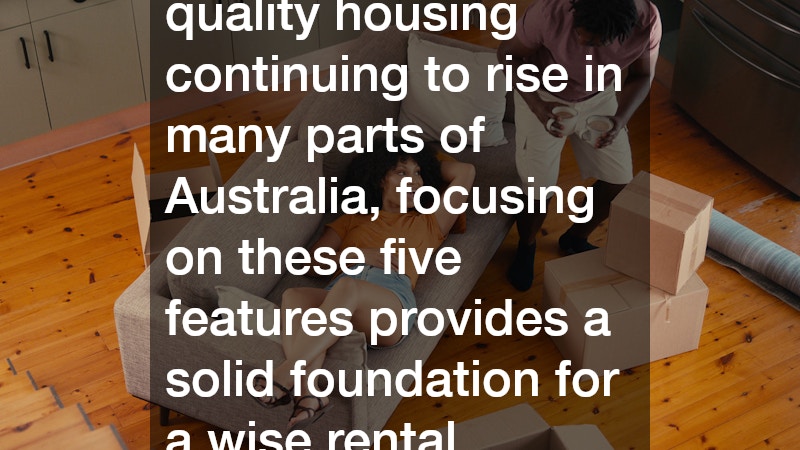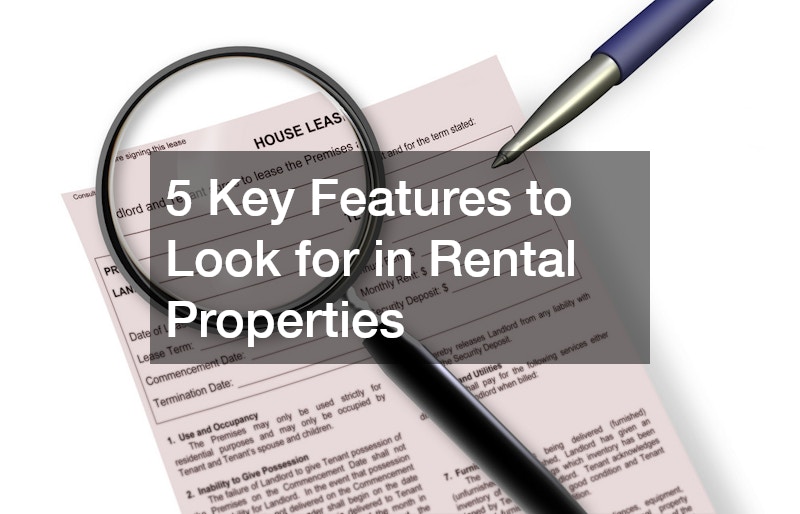When searching for a rental property, it’s essential to consider more than just the price and location. While those elements matter greatly, prospective tenants and investors should also assess specific features that affect both liveability and long-term value.
Whether you’re renting for yourself or choosing an investment, overlooking these key details can lead to frustration or financial loss. To make an informed decision, it helps to evaluate a property using a checklist of desirable characteristics that enhance comfort, reduce maintenance issues and improve the overall rental experience.
Location & Neighbourhood Appeal
A rental property’s location influences lifestyle convenience, community connections and even personal safety. Proximity to public transport, schools, shops and recreational spaces significantly improves daily life. In metropolitan areas, quick access to train lines or bus routes can reduce commuting time and increase property appeal. Families often prioritise proximity to reputable schools, while professionals may favour lively precincts with cafés and restaurants.
The neighbourhood’s general presentation also plays a role. Well-maintained streets, green spaces and quiet surroundings are all subtle indicators of a stable, desirable area. In contrast, frequent noise complaints, neglected parks or visible signs of crime can make even the best-looking property a poor choice. Researching crime statistics, talking to locals and visiting the area at various times of day can help form a realistic picture of what living there might be like.
Property Layout & Functionality
The floorplan of a rental property can impact how well it suits your needs. Properties with a logical layout, adequate natural light and usable living spaces offer far greater liveability. A poorly designed home, with cramped rooms or inefficient traffic flow, may cause daily frustration. Bedrooms that are too small, awkward kitchen placements or living areas with no direct light are subtle red flags that might affect long-term comfort.
Storage is another key component of functional living. A property that includes built-in wardrobes, linen cupboards and external storage like a shed or garage will stand out from those that do not. Similarly, having a separate laundry area or space for appliances is often more valuable than initially assumed. A thoughtful layout ensures occupants are not constantly battling clutter or discomfort.
Structural Condition & Maintenance
When inspecting a rental property, it’s important to evaluate the building’s condition. Signs of damp, cracks in walls, pest issues or worn-out flooring can indicate potential maintenance issues or poor previous management. While some cosmetic problems are easy to overlook, structural defects or neglected repairs may lead to safety risks or expensive upkeep down the track.
It’s also worth asking about the age and condition of major fixtures like plumbing, electrical wiring, air conditioning units and hot water systems. These are not only costly to replace but can severely affect quality of life if they fail. If a property is professionally managed, there should be documentation and a process in place to handle repairs promptly. Tenants should not have to chase landlords for months to fix a leaking tap or broken heater.
Energy Efficiency & Modern Conveniences
In today’s market, energy efficiency is becoming a major drawcard for tenants and landlords alike. Features such as LED lighting, solar panels, insulated windows and efficient heating or cooling systems can reduce power bills and improve indoor comfort. Even double-glazed windows and good quality curtains help regulate temperature, making a noticeable difference throughout the year.
Modern kitchen and bathroom fittings, up-to-date appliances and quality flooring add to the appeal of a rental property. While older homes may have charm, newer or recently renovated properties often deliver better functionality and lower maintenance costs. Additionally, features like NBN connectivity, smart home systems or secure intercom access can significantly influence tenant satisfaction, especially for younger or tech-savvy renters.
Outdoor Areas & Shared Facilities
While internal space is crucial, outdoor areas shouldn’t be overlooked. A balcony, courtyard or garden provides room to unwind, entertain or even grow a few plants. In urban apartments, even a modest outdoor nook can offer a refreshing escape. Well-maintained outdoor areas also reflect the property owner’s attention to detail and respect for their tenants’ well-being.
In larger apartment complexes or townhouse developments, shared amenities like swimming pools, gyms, communal BBQ areas or gardens can add lifestyle value. However, it’s important to assess whether those amenities are well cared for and secure. Unused or poorly managed facilities can quickly become liabilities rather than benefits. Body corporate arrangements should be transparent and reflect a commitment to ongoing maintenance.
Making the Right Choice
Choosing a rental property involves more than ticking boxes on a standard checklist. It’s about understanding what creates a comfortable, safe and sustainable living environment. Whether evaluating a home for personal use or as an investment, taking the time to assess location, layout, condition, energy efficiency and outdoor appeal is essential. These key features ensure that the property will meet daily needs and offer long-term value.
Remember that while cosmetic appeal might catch your attention during an inspection, it’s the deeper qualities of the rental property that will affect your day-to-day experience. A well-located, well-maintained and practically designed home isn’t just easier to live in—it’s also more likely to attract quality tenants and reduce vacancy periods. With demand for quality housing continuing to rise in many parts of Australia, focusing on these five features provides a solid foundation for a wise rental decision.

